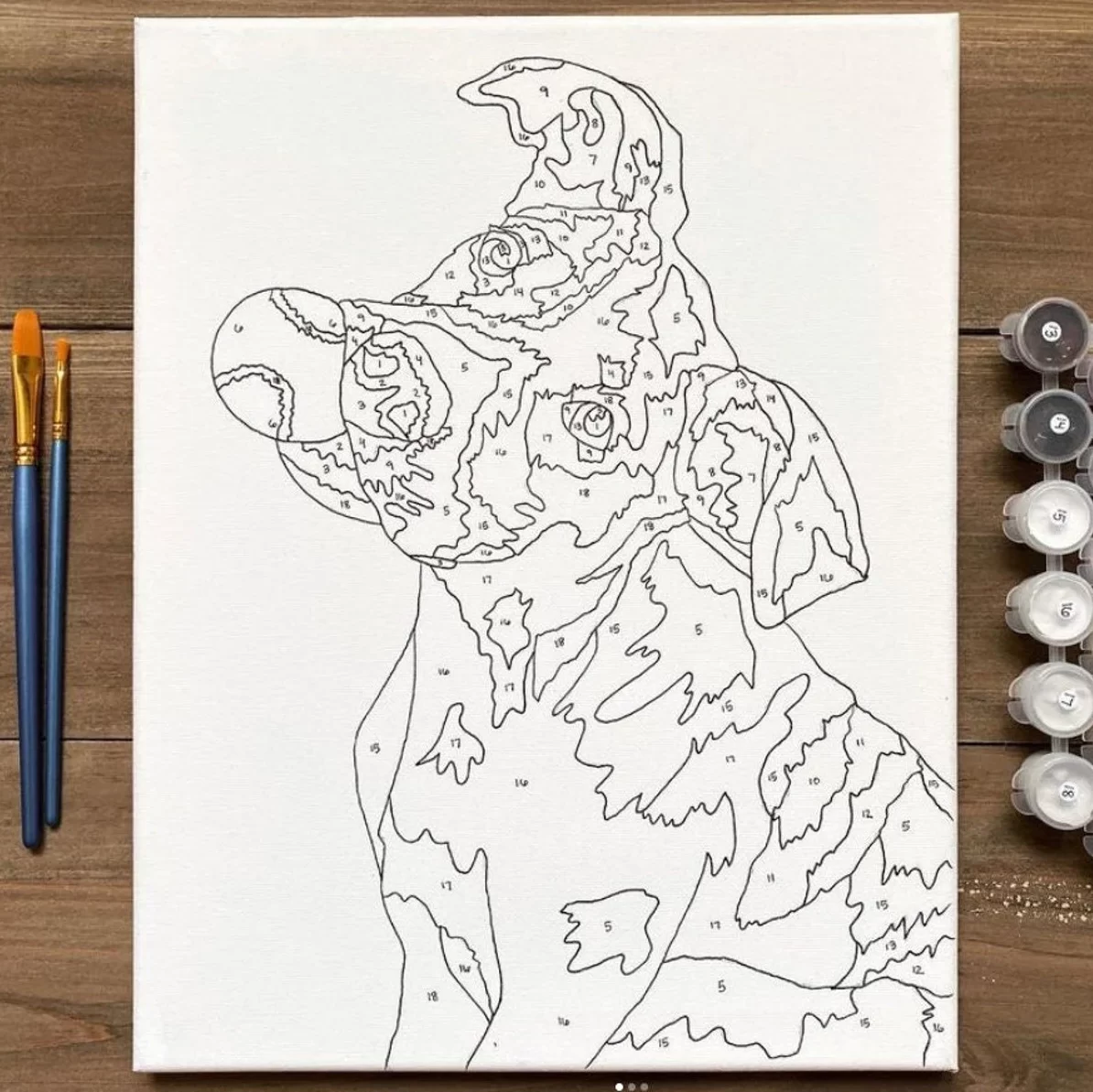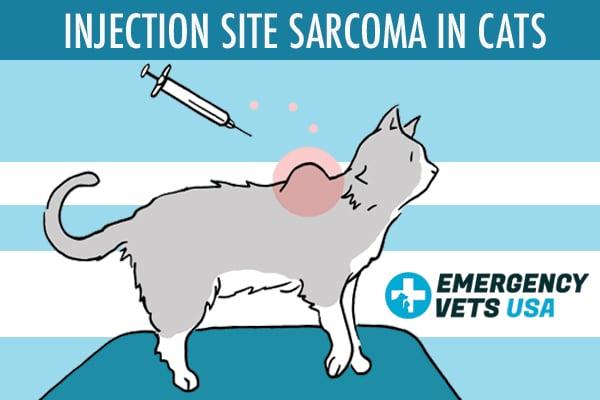If you are reading this in 2024, you may have a cat with Fibrosarcoma -vaccine-associated sarcoma (VAS)- or you may be searching for information on this topic online. Unfortunately, we learned about this disease when it happened to our beloved cat. As a cat owner, you want to do everything in your power to keep your furry friend healthy and happy. One of the most important ways to achieve this goal is by making sure your cat is up to date on all their vaccinations. However, recent studies have shown that some vaccines, particularly those for rabies and feline leukemia, may increase the risk of developing fibrosarcoma in cats.

The issue of fibrosarcoma is a bit distressing. In this article, we want to talk about both this disease and what you can do for your cat. It’s an important topic because the treatment of soft tissue tumors is quite difficult, unfortunately with a high recurrence rate and can even cause death in some cats.”
Fibrosarcoma was discovered when veterinarians realized that some soft tissue tumors in cats might be associated with previous vaccinations. When a series of tumor samples were examined, it was found that the foreign material seen in the analysis was an adjuvant (the part of the vaccine that “calls” cells to react to the injection) found in vaccines.
It has been clinically proven that vaccines, which normally extend and save lives, can have a reverse allergic effect in some cases. A rare breed of cats has a chance of showing a real “allergic” reaction to a vaccine, just like dogs or humans. Vaccines contain foreign proteins that we inject into our furry friends’ bodies. However, it is also true that injections (any injection) can cause a reaction that leads to sarcoma in cats. It is still not entirely clear what causes inflammation, which vaccines, which manufacturer, and why cats develop this dreadful disease.

What is the incidence rate of injection site sarcomas?
According to the rates calculated on cases, the average incidence of sarcoma in 100,000 vaccinated cats varies between 10 and 100 cats, which is about 0.1-1% of vaccines. There seem to be some regional differences, but the rates are always similar worldwide.
All vaccines, long-acting steroids, subcutaneous fluids, and antibiotic injections initially caused veterinarians to believe that this was only due to vaccines, and we saw a higher incidence in killed vaccines (Rabies and Feline Leukemia Virus, also known as FELV) and particularly those that used aluminum as an adjuvant. If a cat received all vaccines in the same spot in the neck, there was a higher chance of sarcoma, which is why we now divide them. The recommended sites are now not only the neck but also the Right hind leg for rabies, Left hind leg for leukemia, and Right front leg for FVRCP.
What is Fibrosarcoma?
Fibrosarcoma is a type of cancer that develops in the connective tissue of the body. In cats, this cancer typically appears as a firm, slow-growing mass under the skin, usually at the site of a previous injection. These tumors can range in size from a small pea to a large grapefruit and can become very invasive, making them difficult to remove.

Vaccine-Associated Tumors
While vaccines are an essential part of your cat’s preventative healthcare routine, there is a small risk of developing vaccine-associated tumors. These tumors occur when the vaccine triggers an excessive immune response, causing inflammation and the growth of cancerous cells at the site of the injection. Rabies and feline leukemia vaccines are the most commonly associated with fibrosarcoma, but other vaccines may also increase the risk.
You can also read about another article about fibrosarcoma in cats;
Prevention and Treatment
While the risk of developing a vaccine-associated tumor is small, it’s essential to take preventative measures. Speak with your veterinarian about strategies to reduce the risk of tumors, such as avoiding unnecessary vaccinations, spacing out vaccines, and injecting vaccines in areas where they can be easily removed if necessary.
If you notice a lump or bump at the site of a previous injection, contact your veterinarian immediately. Early detection is crucial to effective treatment, which may include surgery, radiation therapy, and chemotherapy.
In conclusion, vaccines are an essential part of your cat’s preventative healthcare routine. However, it’s important to be aware of the small risk of developing vaccine-associated tumors, particularly with rabies and feline leukemia vaccines. By taking preventative measures and seeking prompt veterinary care, you can help reduce the risk and ensure the health and well-being of your feline friend.
-
Product on sale
 The Brave General #17 – Custom Design Pet Canvas
The Brave General #17 – Custom Design Pet Canvas50 $35 $ -
Product on sale
 The Paws of Justice – Captain Lab America – Custom Pet Canvas
The Paws of Justice – Captain Lab America – Custom Pet Canvas50 $35 $ -
Product on sale
 Forest Sentinel – Custom Design Pet Canvas
Forest Sentinel – Custom Design Pet Canvas50 $35 $ -
Product on sale
 Leonardo’s Brilliance– Custom Design Pet Canvas
Leonardo’s Brilliance– Custom Design Pet Canvas50 $35 $ -
Product on sale
 Regal Feline Elegance – Custom Royal Pet Portrait
Regal Feline Elegance – Custom Royal Pet Portrait50 $35 $ -
Product on sale
 The Commander – Custom Design Pet Canvas
The Commander – Custom Design Pet Canvas50 $35 $ -
Product on sale
 VECTOR ART | Custom Design Pet Portrait
VECTOR ART | Custom Design Pet Portrait44 $27 $ -
Product on sale
 Sophisticated Lady – Custom Design Pet Canvas
Sophisticated Lady – Custom Design Pet Canvas50 $35 $ -
Product on sale
 Salvador Dali Style – Custom Design Pet Canvas
Salvador Dali Style – Custom Design Pet Canvas50 $35 $













































 Canvas
Canvas Fleece Blanket
Fleece Blanket Beach Towel
Beach Towel Pillow
Pillow 3D Lenticular Poster
3D Lenticular Poster Mug
Mug Phone Case
Phone Case Puzzle
Puzzle Paint by Number Kit
Paint by Number Kit Mouse Pad
Mouse Pad Clothing
Clothing Pet Supplies
Pet Supplies Custom
Custom Male Portraits
Male Portraits Female Portraits
Female Portraits Multiple Portraits
Multiple Portraits Kid Portraits
Kid Portraits Masterpiece Portrait
Masterpiece Portrait Print Ready Designs
Print Ready Designs 1 pet
1 pet 2 pets
2 pets 3-pets
3-pets 4 pets
4 pets 5 pets
5 pets 6 pets
6 pets 7 pets
7 pets Order Process
Order Process Photo Guide
Photo Guide Frequently Asked Questions
Frequently Asked Questions